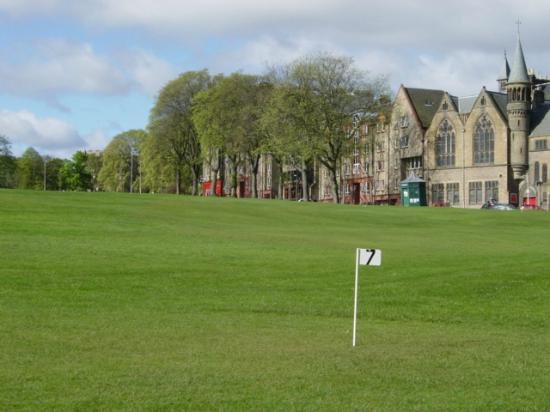Edinburgh’s Hidden Parklife
22nd Jul 2015
Have you noticed the mysterious glowing ball in the sky? It seems that summer has finally hit Edinburgh, and although we might not be crowded into the tiny closes of the Old Town these days, many of us city dwellers still have a lack of outdoor space.
We’ll be found flocking to our parks and green spaces instead, amongst the glorious chaos of Frisbees, disposable barbeques, and acoustic guitars, to soak up every last bit of vitamin D we can find. But have you ever thought about the history of the parks of the capital? Many of them have some incredible secrets, some surprising, and some just a little sinister...
Ever wondered why Princes Street Gardens, with its pristine flower beds and vast expanses of lawn is so green and verdant? It could well be because the area began life as the Nor’ Loch, a man made defensive expanse of water designed to protect Edinburgh castle from invaders. Not only was it the source of our drinking water, it was also where we tested our witches, dumped the bodies of our dead animals, and where we deposited the contents of our toilet buckets. It’s no wonder that life expectancy was so low! It was drained in the 1770’s and turned into a private park for the residents of Princes Street, only being opened to the public in 1816. The rules for the people of Edinburgh were extremely strict: no dogs, perambulators, cricket, or smoking, and anyone using a bath chair had to send a doctor’s certificate to the committee members to prove they didn’t have a contagious disease!
The two great grassy mounds known as Giant’s Brae and Lady Fyfe’s Brae are the remains of siege trenches dug in 1566 during the Seige of Leith. But in more peaceful times, Leith Links became one of the earliest golf courses in the world, with James VI and Charles I being said to have played on the five hole course. But beware...beneath your feet lie the remains of the unfortunate souls who perished in an outbreak of plague that hit the city in the 17th century.
Saughton Park
This hidden gem was the site of the 1908 Great Scottish National Exhibition, an event that drew an astonishing 3.5 million visitors. Amongst the attractions was an amusement park with a great water chute, and gondola rides on the Union Canal. A Senegalese baby was also christened in front of the crowds, and was given the unfortunate name of Scotia Reekie! Think again if you believe unique names are a modern invention.
Another of the cities early golf courses without a doubt, but it’s also said some of its peculiar hillocks are plague burial mounds. What’s more likely is that they’re the remnants of a quarry, locally known as Tumblers Hollow, which provided the city with much of its sandstone.
Sitting in the shadow of Arthur’s Seat, Holyrood Park is the ancient hunting ground for our royal family. It’s said that in 1128 King David came was confronted by an angry stag, so ferocious it caused him to pray to God for his protection. A cross with a heart in its centre appeared between the stag's antlers before the animal ran off, sparing the king’s life. The incident influenced him to build Holyrood Abbey, and the image of the antlers, the cross and the heart is now the emblem of the Cannongate.
The stunning Botanic Garden is the second oldest of its kind in the world, dating back to 1670. It started life as a physic garden used for herbal medicine close to Holyrood Abbey, and has moved several times: to North Bridge on the site now used by Waverly train station, Leith Walk, and its current site in Inverleith. It has over 13 thousand different varieties of plant spread between its formal gardens and expansive glasshouses.
So the next time you find yourself lounging in one of our great open spaces, consider what has gone before, the adventures of generations past, and the souls that may lie beneath your flip-flopped feet.

